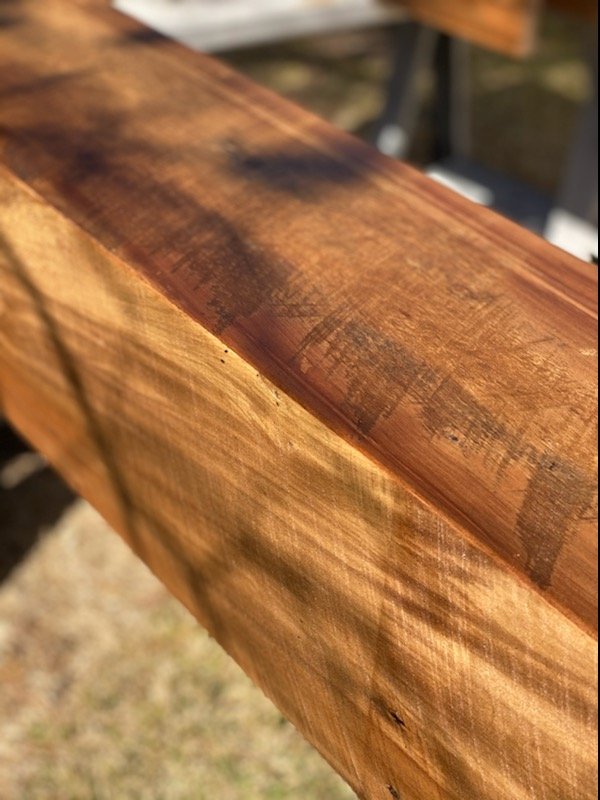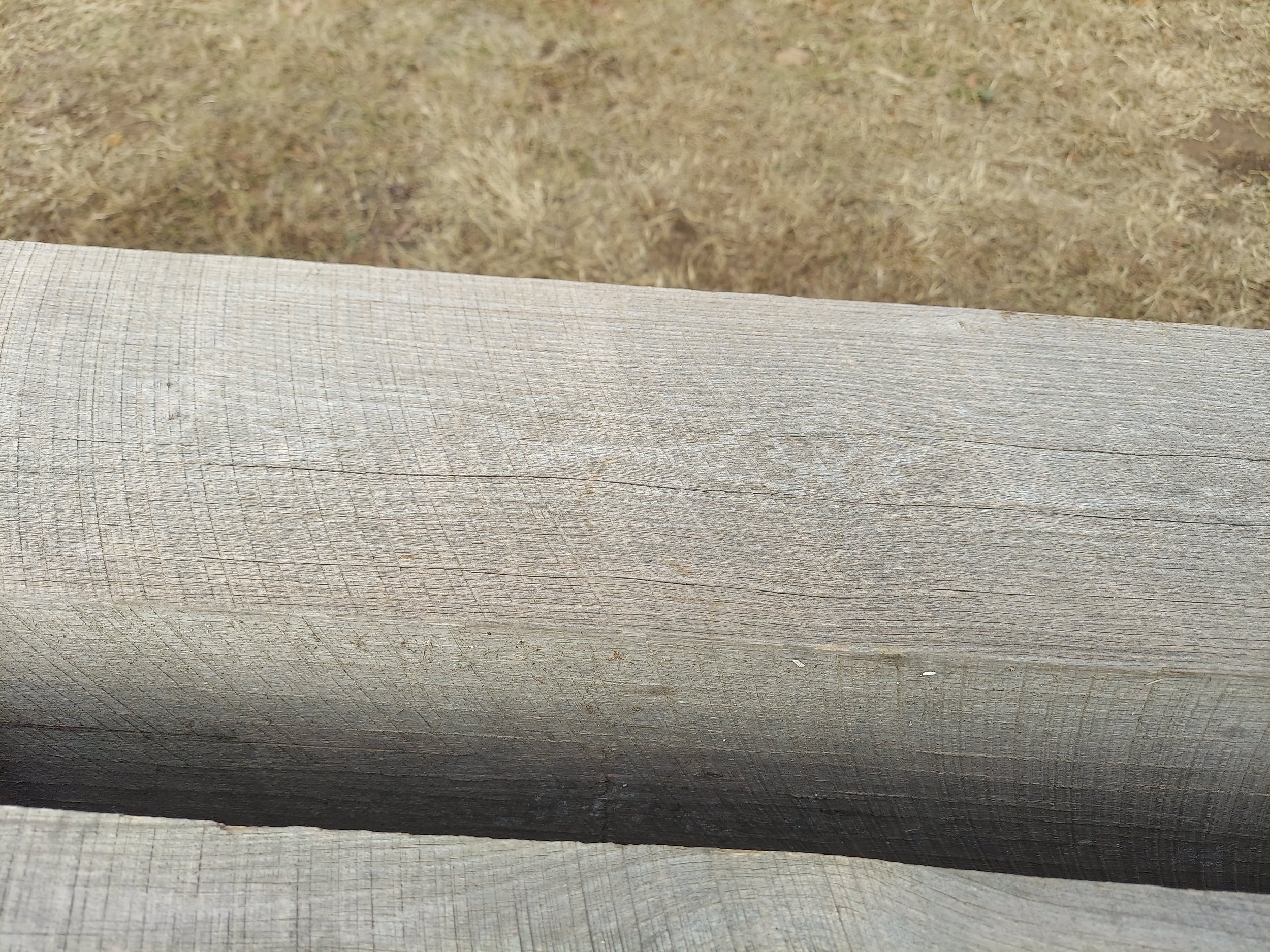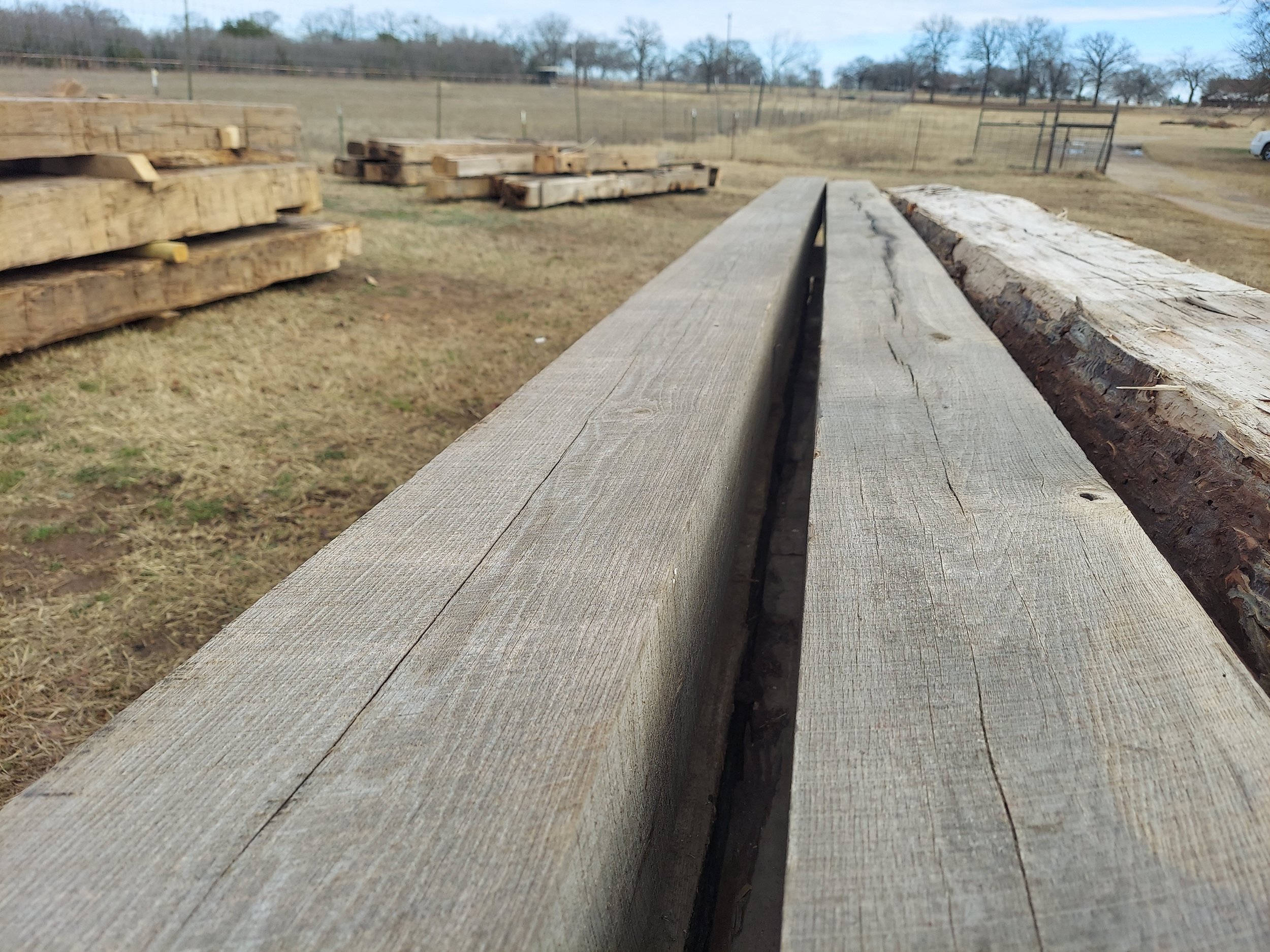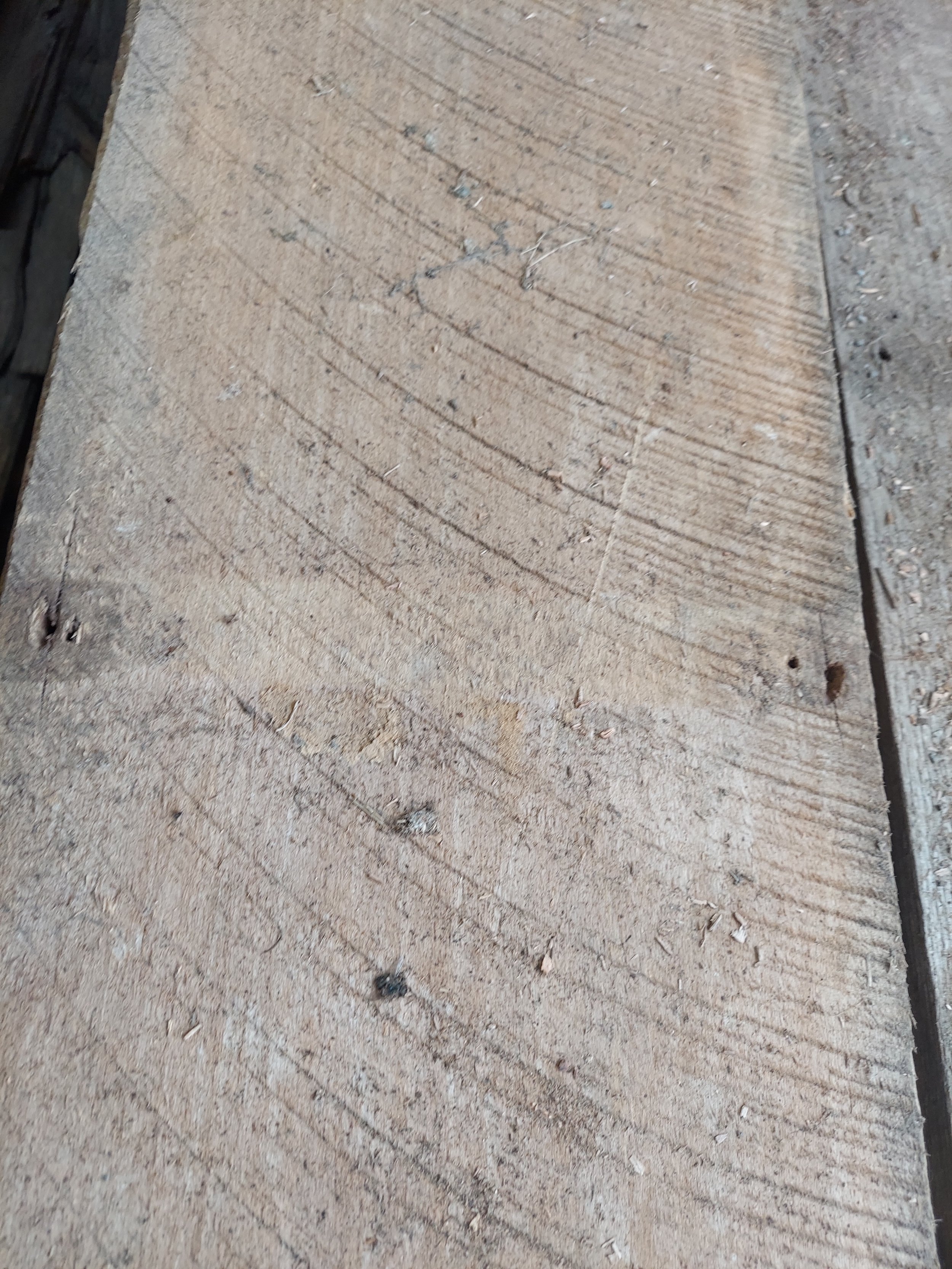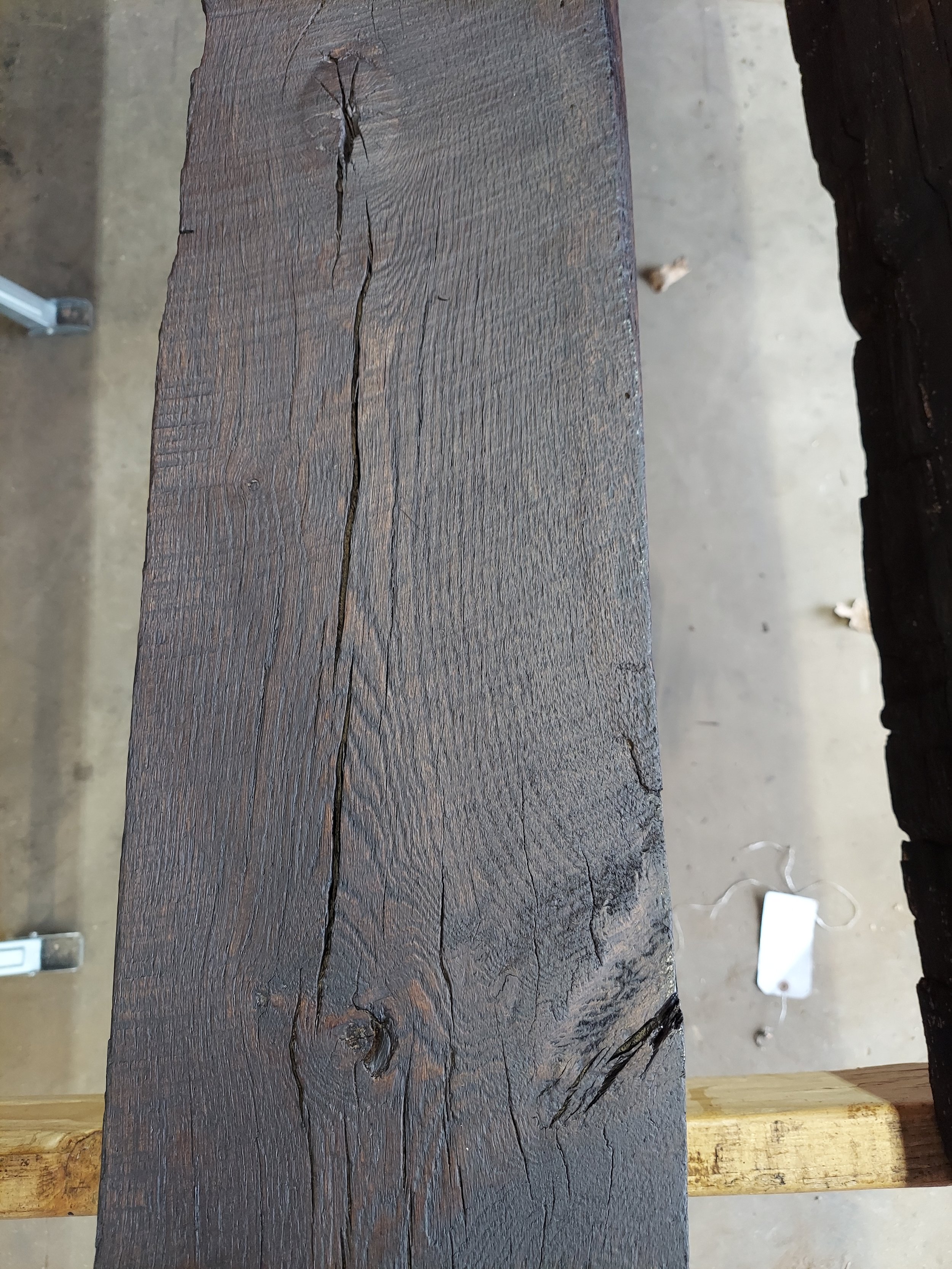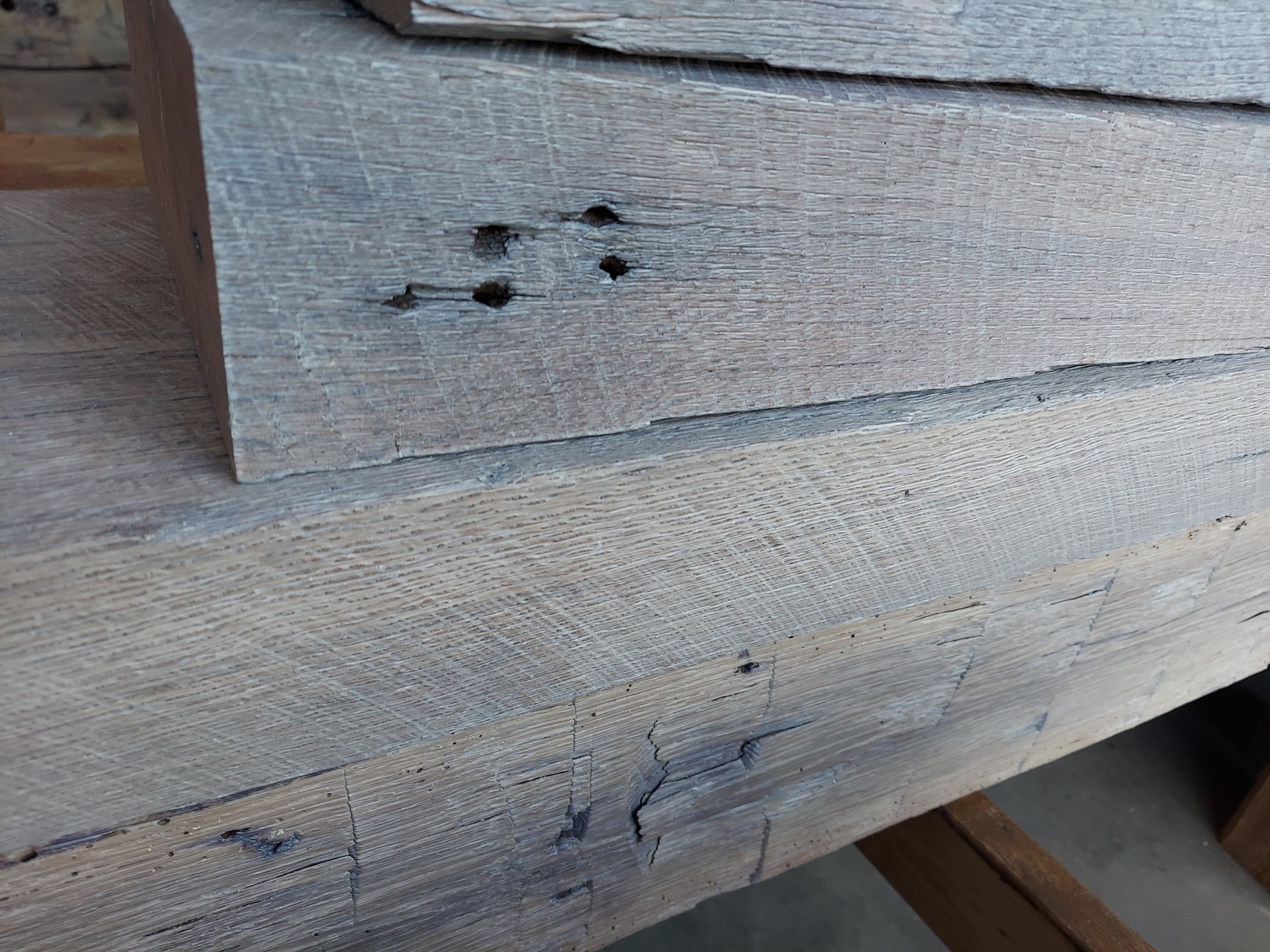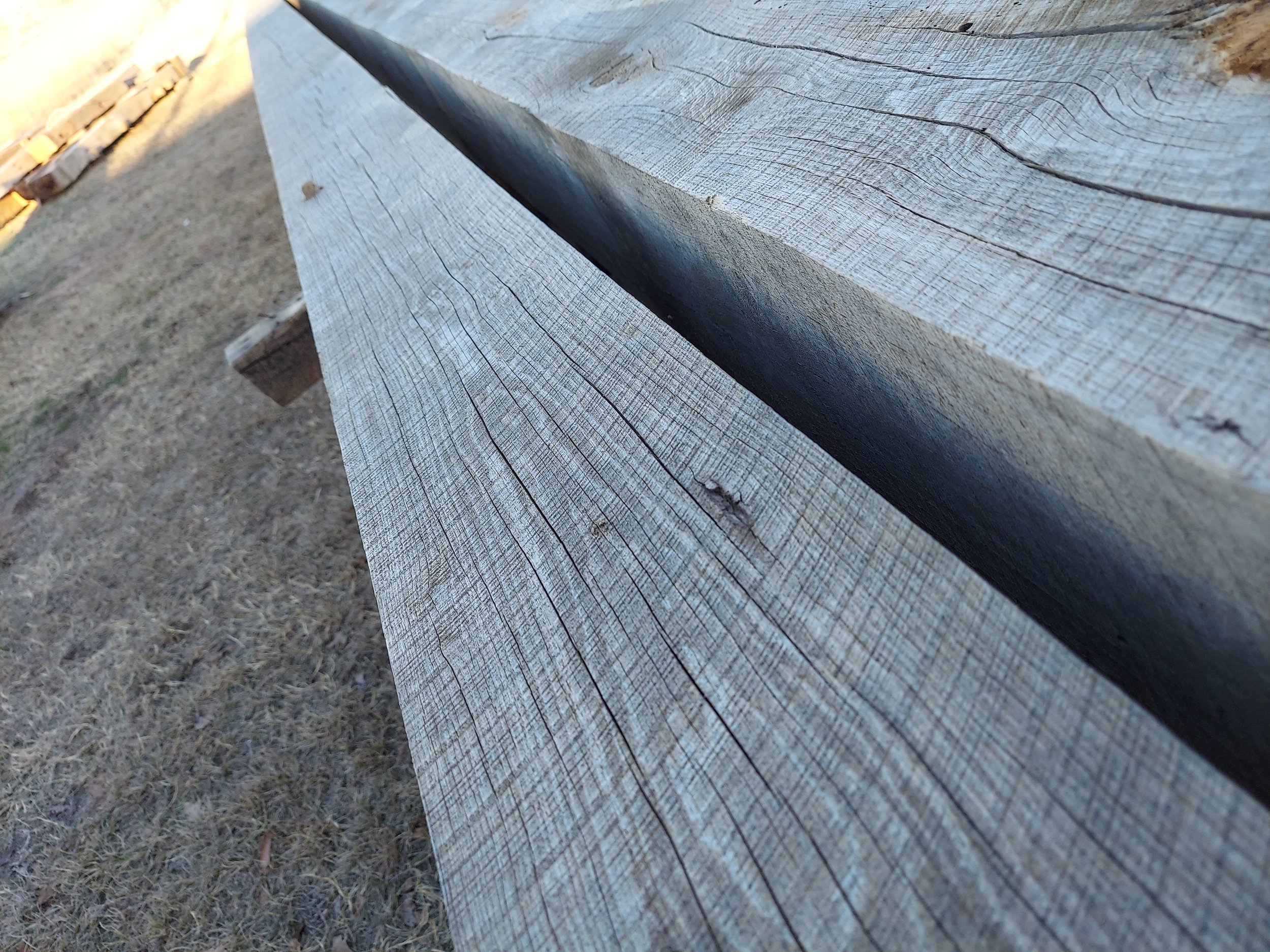
Wood Beams
Wood Beams
-

Hand Hewn Wood Beams
Hand Hewn Beams are squared using primarily a large head broad axe or an adze. It is an ancient method that was used before the invention of electricity and industrial sawmills. Hewing timber was common to flatten two or four sides of log timbers making them into hand hewn wood beams.
Lucky for those that appreciate the craftsmanship of the past, with every swing of the adze the old wooden beams were enhanced with chop marks that gave hand hewn beams its character. Also take note that some reclaimed wood beams have mortise and tenon joints.
A Mortise is a rectangular box that was carved out by hand using chisels and a hammer.
A tenon is a portion of the wood beam that is squared off and designed to be a tight fit into the mortise joint. Then using a hand drill, small peg holes were drilled through one side of the beam going also into the tenon. A dowel was then hammered tight through the beam into the tenon holding two beams together and supporting the entire barn.
It is common to have mortise, tenon and dowel marks on a real rustic fireplace mantel or barn wood beams.
-

Rough Sawn Wood Beams
Rough sawn lumber was created when wood timbers were milled using a very large circular saw-mill between the 1850’s and about 1910. Sawn Beams from this era are typically referred to as rough sawn lumber, sawn cut lumber, sawn marked, sawn cut boards, circle sawn or simply sawn.
Since electricity did not become a commodity till the 1880s, many sawmills were being powered by steam or a water turbine. Rough sawn lumber in its infancy had a lot of techniques that are still being used today. Pioneers tried chain driven, belt drive and shaft driven systems to spin a roughly five foot blade at high speeds hoping to cut square structural wood beams that had been growing for over 100 yrs. Trees were much bigger back then.
Using a sawmill to create rough sawn lumber increased production vastly over using an adze and broad axe. However, with a huge blade and a small drive system the blades had a lot of chatter where they moved slightly to the right and left. This, leaving a very unique sawn cut mark. It is these authentic sawn marks along with the age and history of real barn wood that make rough sawn lumber desirable.
Hewing in woodworking: hewing is the process of converting a log from its rounded natural form into lumber with more flat surfaces. It is an ancient method of squaring up wood beams.
Hand Hewn Wood Beams
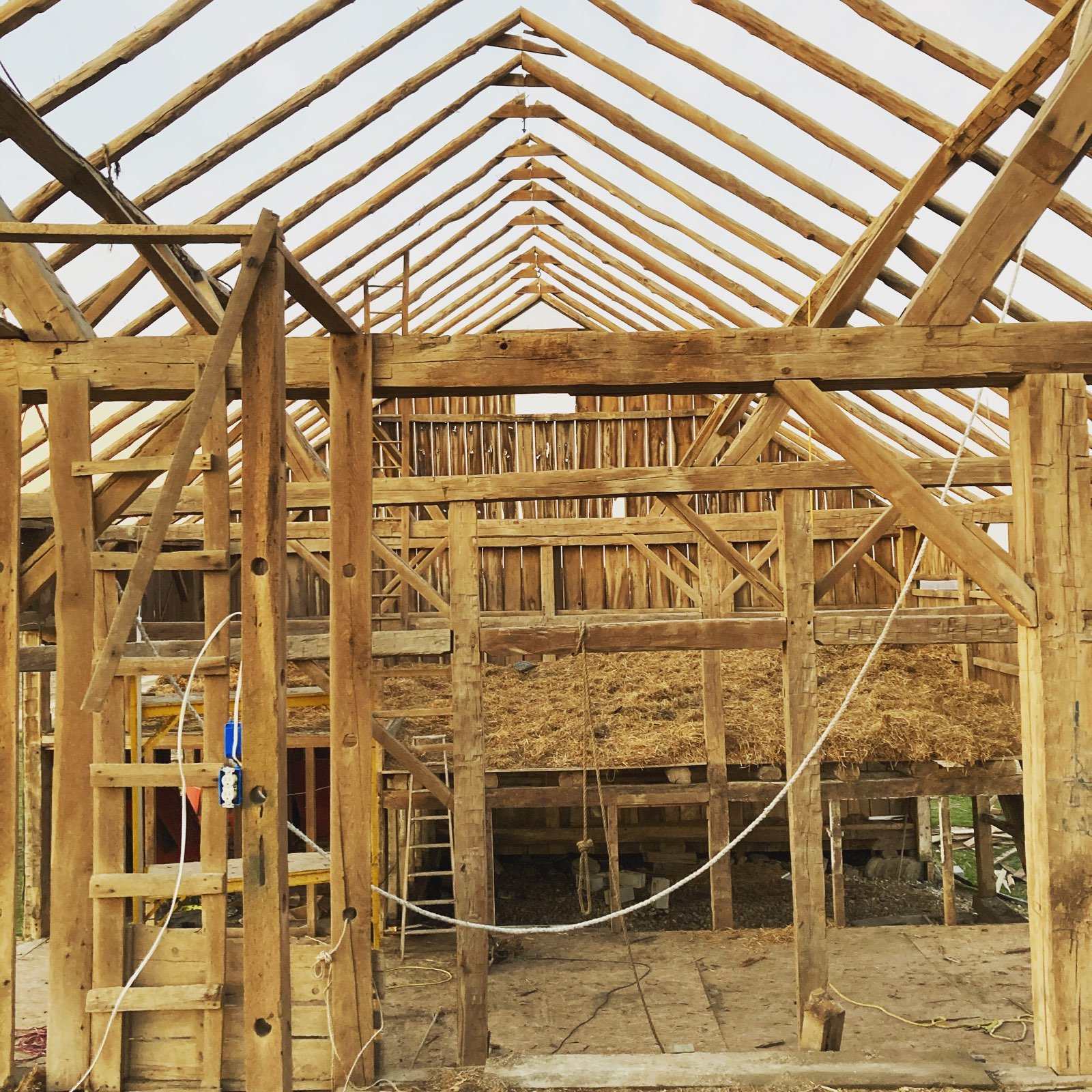


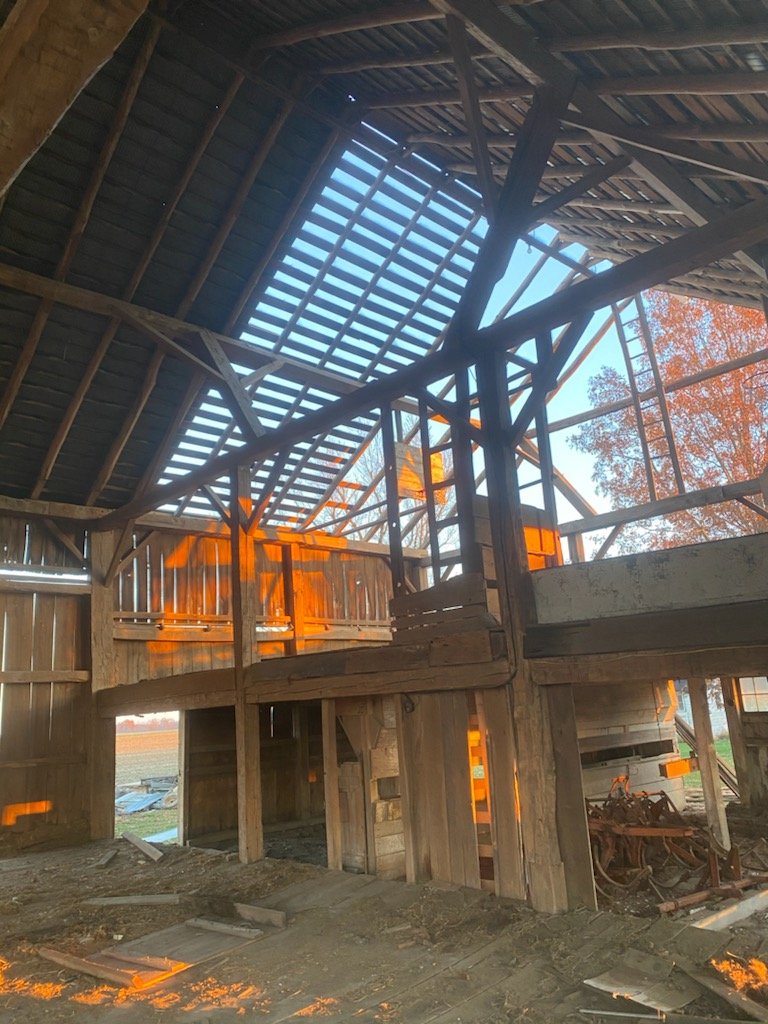
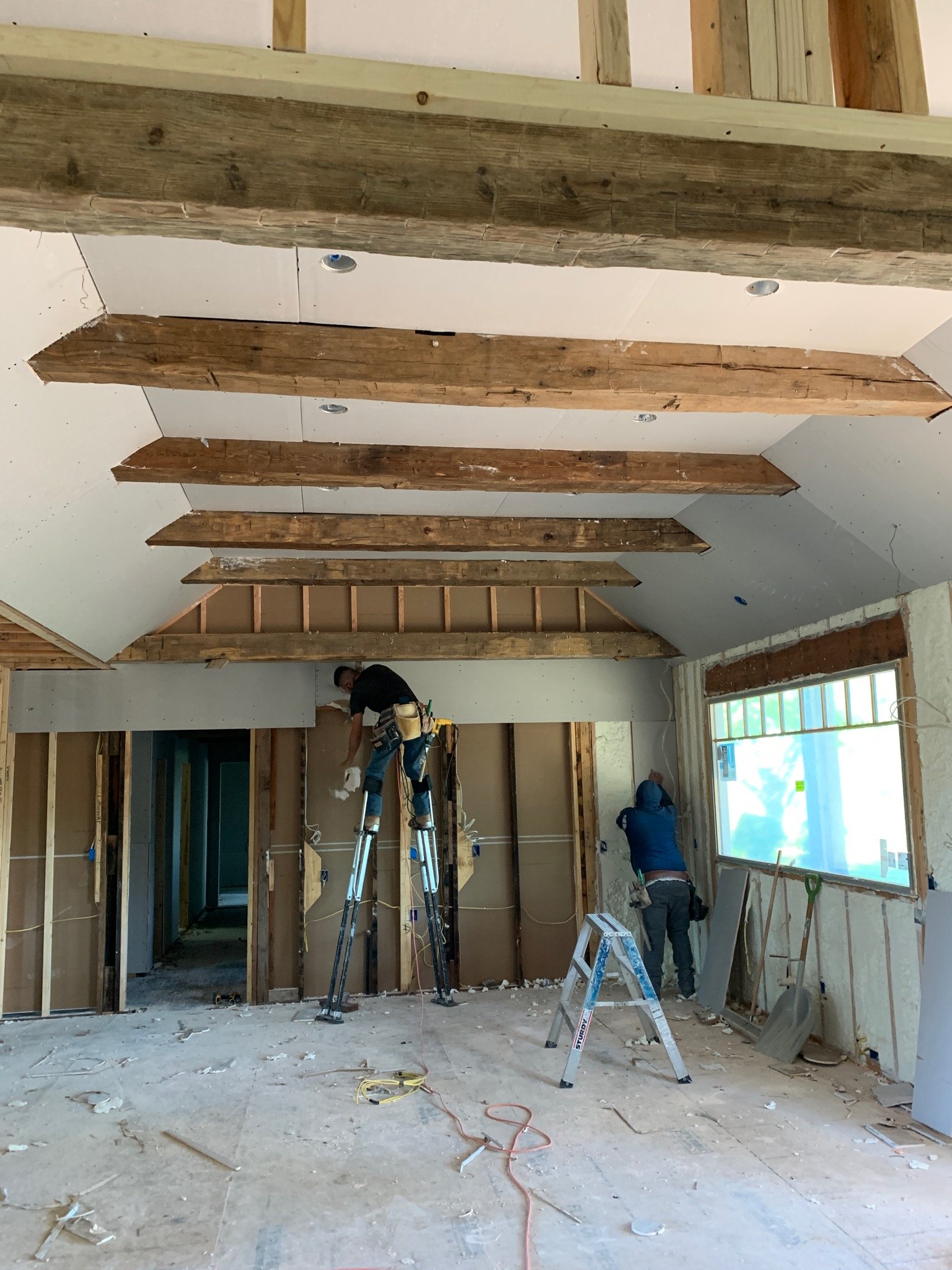

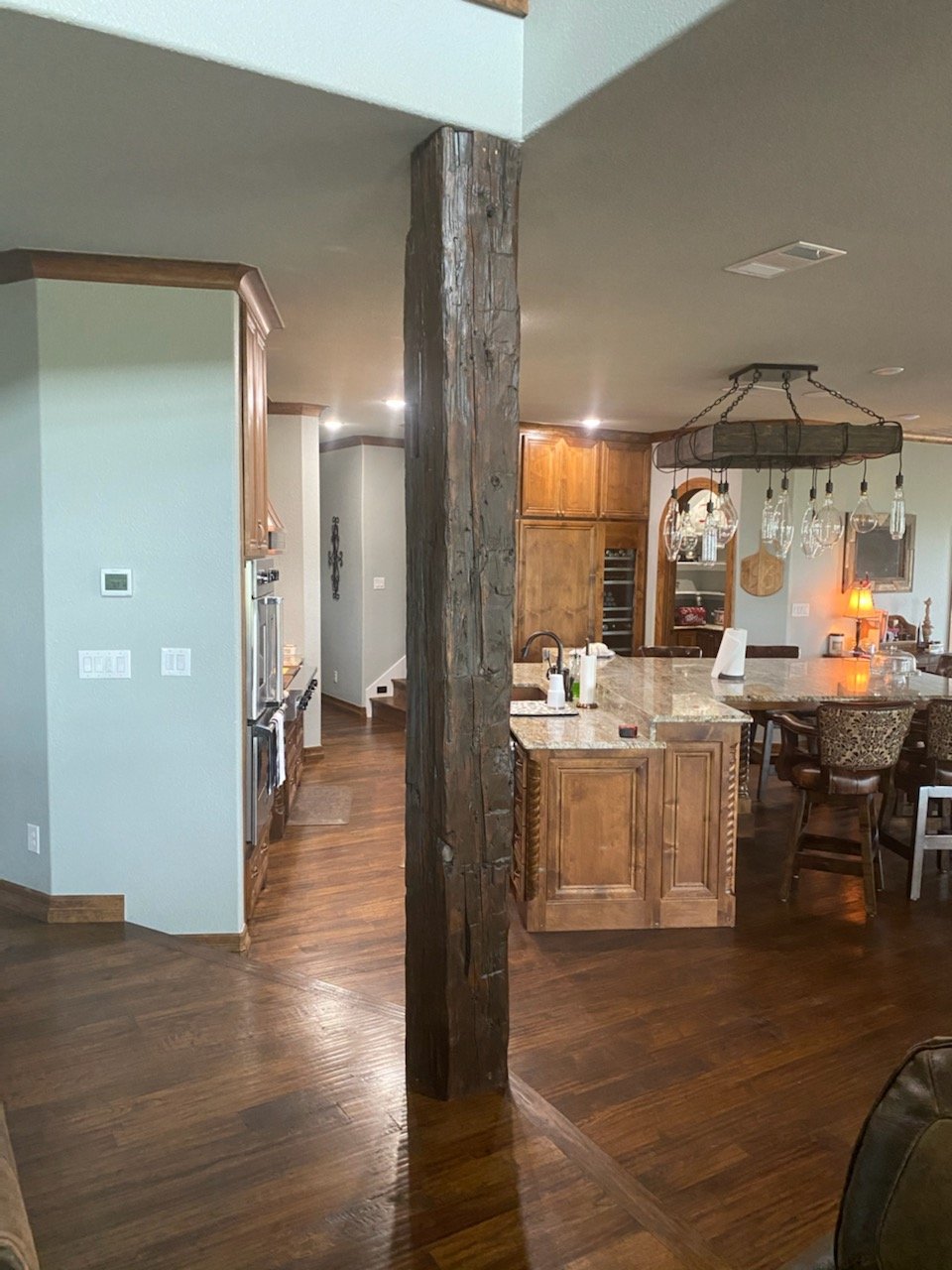

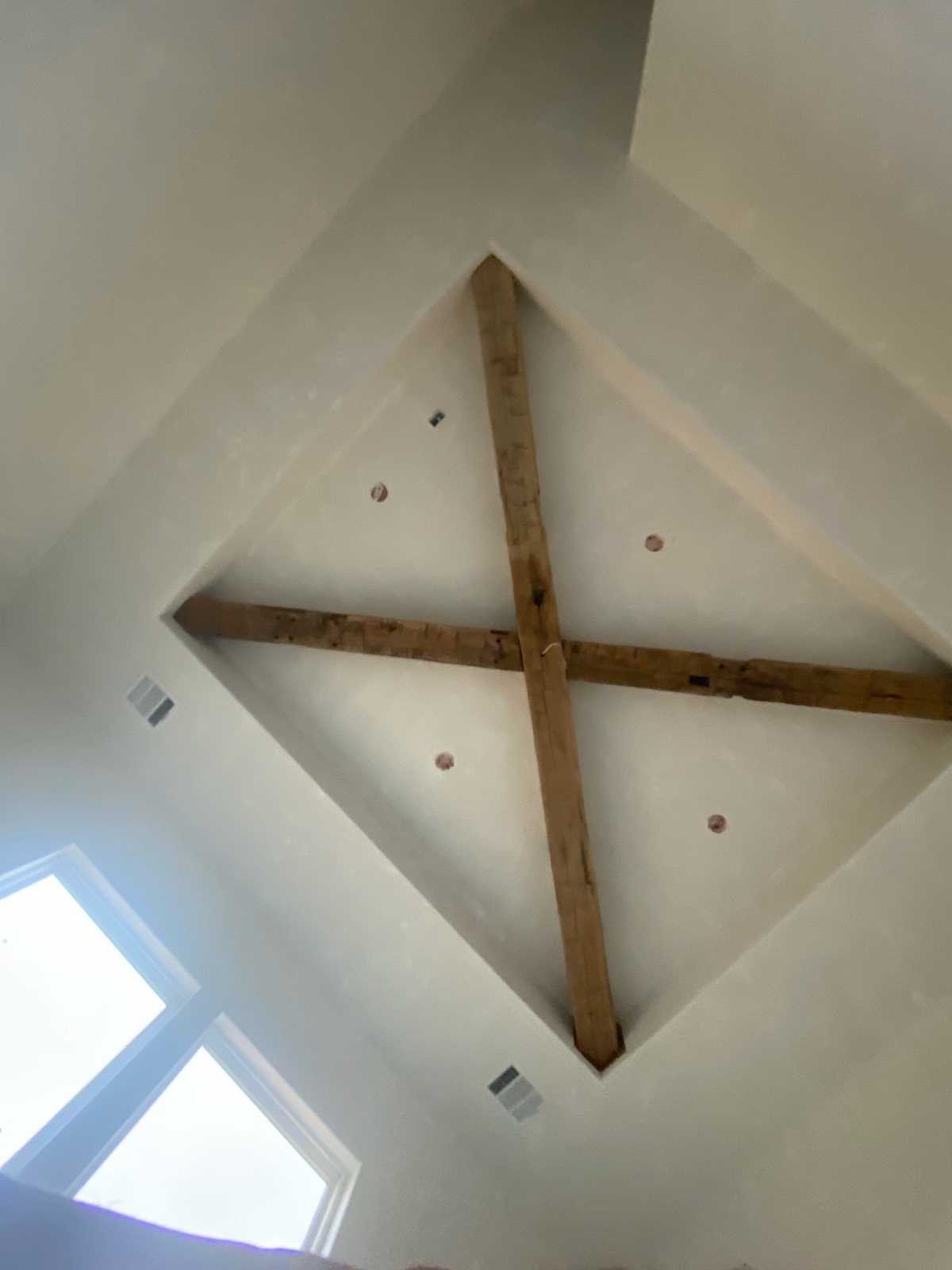


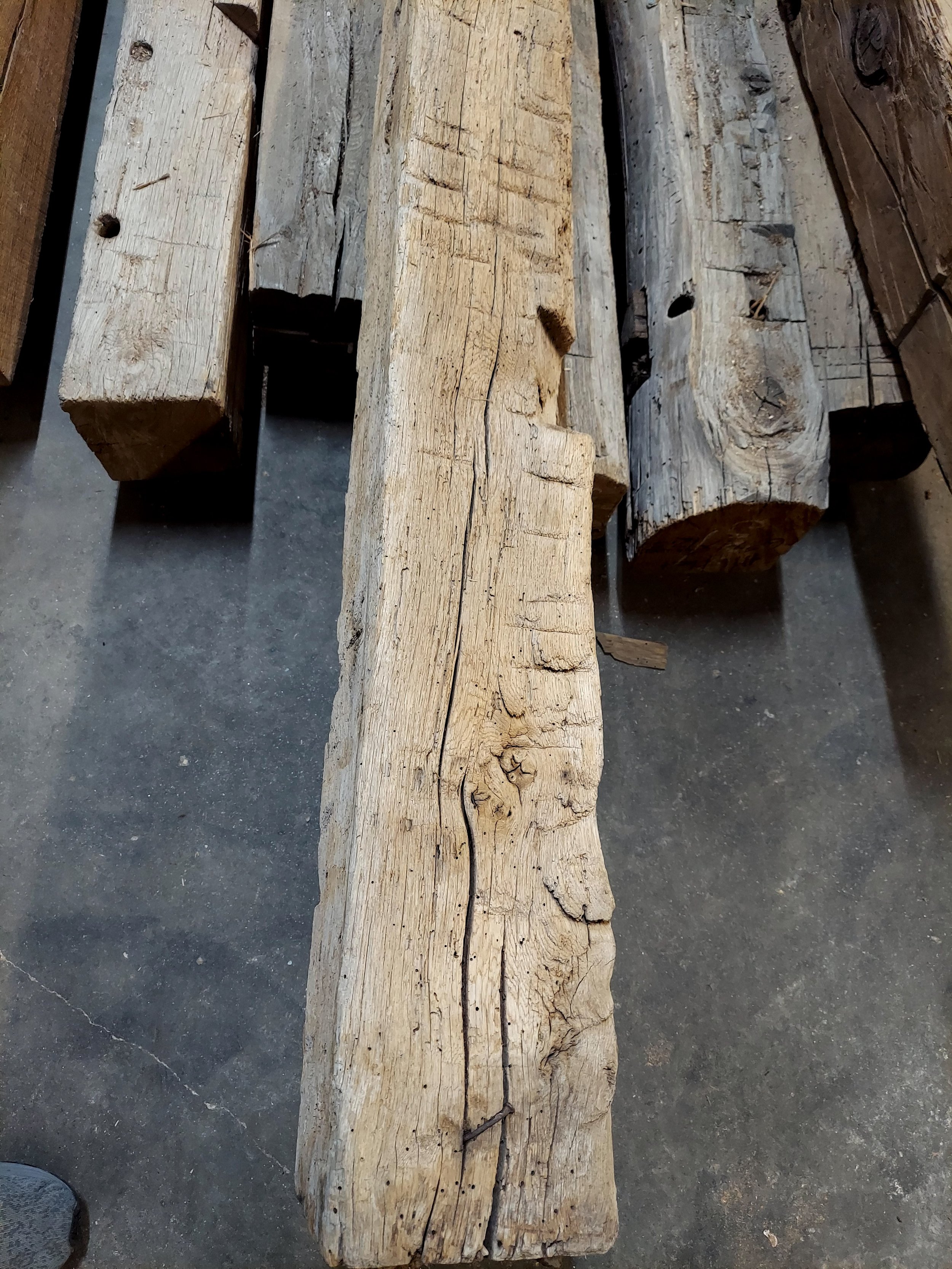



Rough Sawn Cut Beams
